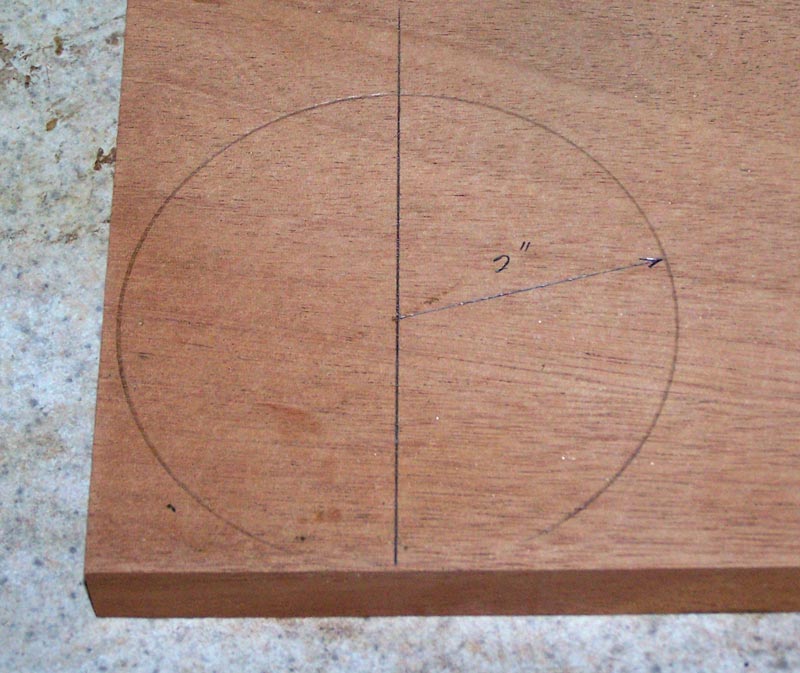
Carving a Complex Shell
P. Michael Henderson
January 6, 2009
After you've mastered the simple shell and the second shell, you're ready to tackle this shell, which falls into the complex shell category.
If you find this tutorial useful, I'd really appreciate if you would send me an e-mail with the subject line of "Complex Shell" so I can get some indication of how many people are reading it.
Note that I use the Swiss system to describe carving tools in all of my carving tutorials.
I'm going to use a piece of 3/4" Honduras mahogany for this project because that's what I happen to have available right now.
The layout of this shell is fairly complex. There's a lot of things to lay out so the blank can get busy fairly quickly. Because of the complexity, it's not a shell that can be made small - there's too much detail that you wouldn't be able to carve if the shell was small. For that reason, the shell I'm going to do is about 4" across.
We layout the shell before we cut the blank. So our shell will be laid out on the 3/4" mahogany. We begin by drawing a circle with a 2" radius. Then draw a vertical line through the circle. Use a combination square to draw the line.

Then draw a line perpendicular to the vertical line, and 1/4" below the center of the circle. This will be the bottom end of the lower flutes on both sides.
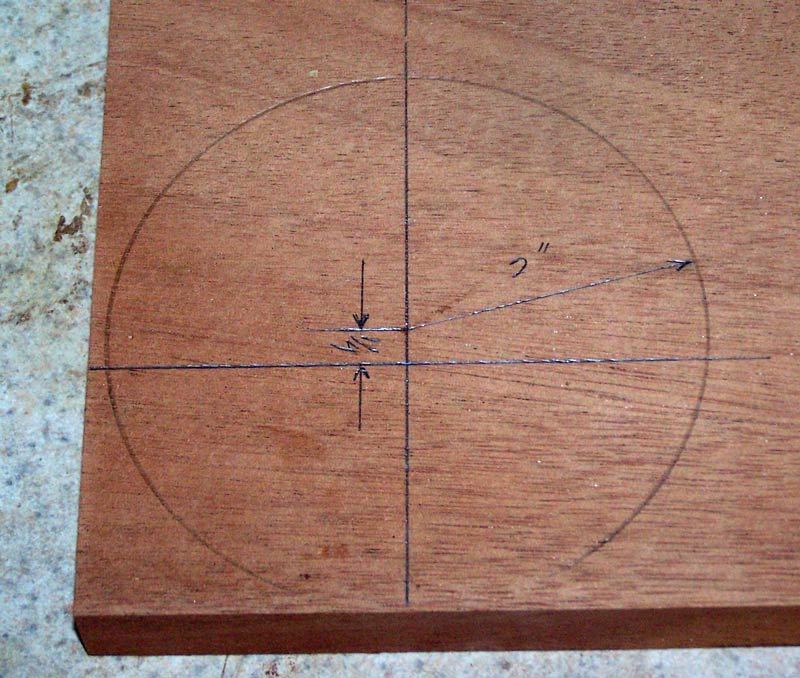
Next, using a set of dividers, step off three equal divisions, on each side, between the top and the line you just drew. These points will be the ends of the convex flutes. Later, we'll mark the location of the ends of the concave flutes.
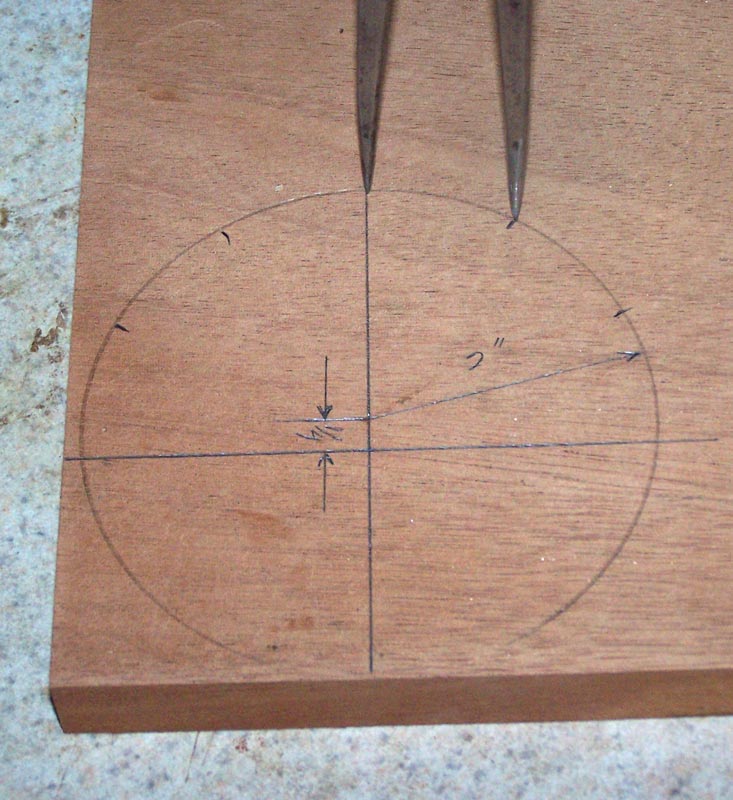
Now draw a horizontal line 3 5/8" from the top. This will be the lowest extent of the shell. The shell is not completely round - it's wider than it is tall.
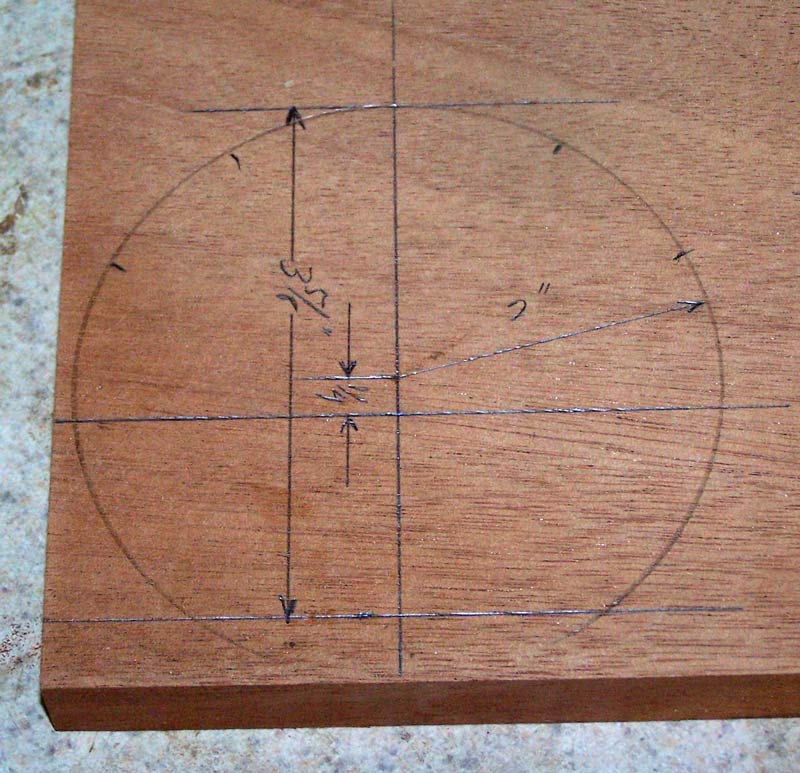
For the next few steps, we're going to focus on the lower extent of the shell - the bottom of the shell proper and the two hinge parts on either side (side note: on real scallops these are called "ears").
Draw an arc with radius 3/4" at the bottom of the shell. This will be the bottom center of the shell proper. Then draw another horizontal line about 1/4" or maybe 5/16" above that line. The intersection of this line and the original circle will be the outer corners of the hinges.

Set your compass to 1 3/8" radius and draw an arc that connects the ends of the 3/4" arc with the line that's the lower part of the lowest flutes. This arc will outline the lowest flutes.

Now draw an arc with radius 1 3/4" on both sides to outline the sides of the hinges.
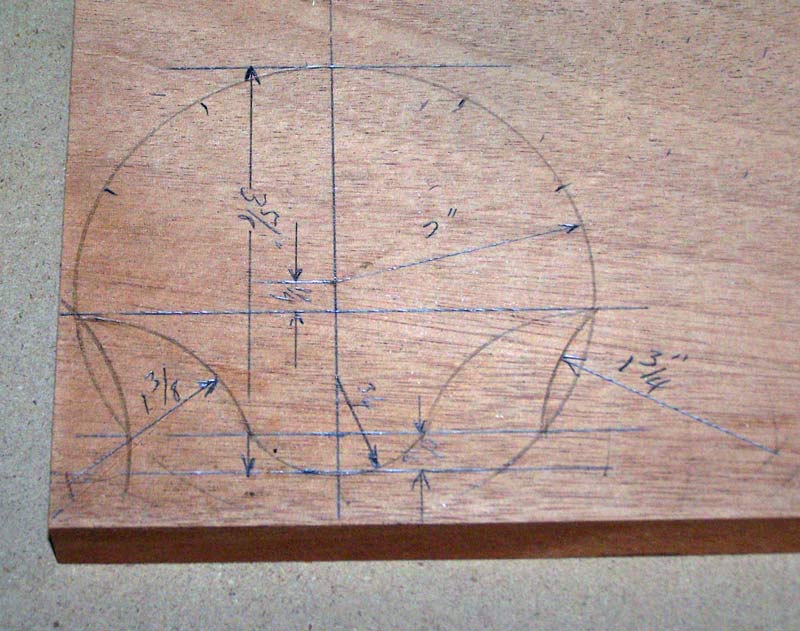
We use an arc of 2 1/2" for the lower part of the hinges. I've also included a close up of the left side so that you can see this arc better.
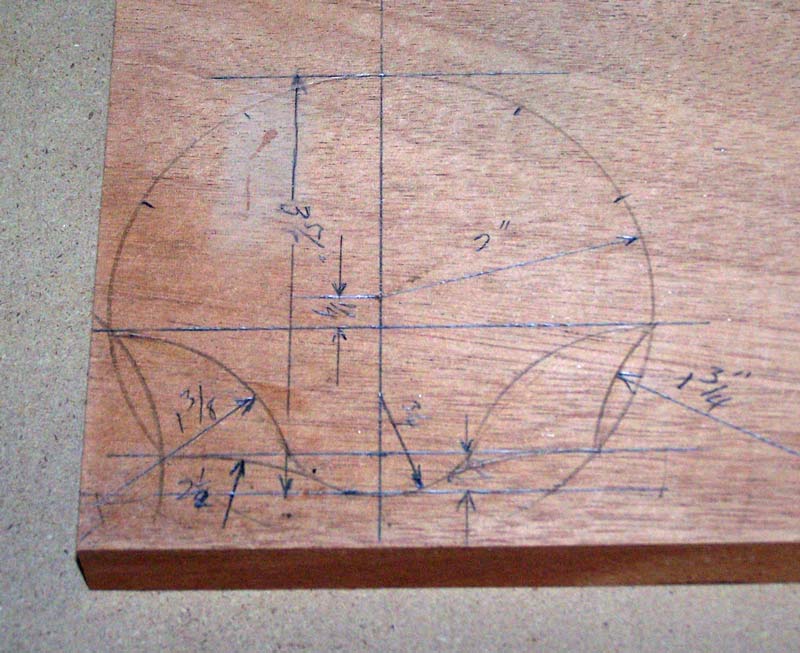
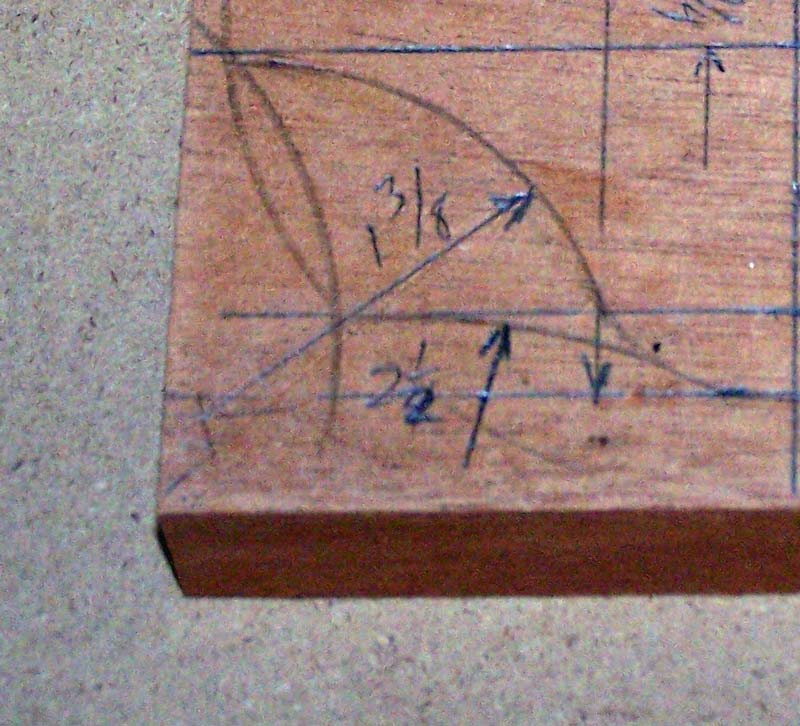
We're finished with the bottom of the shell and are now going to draw the flutes.
First, draw a circle about 1 3/4" inches, using the original center. Then divide each of the flute sections we drew earlier in half. These marks will be the center of the concave flutes.
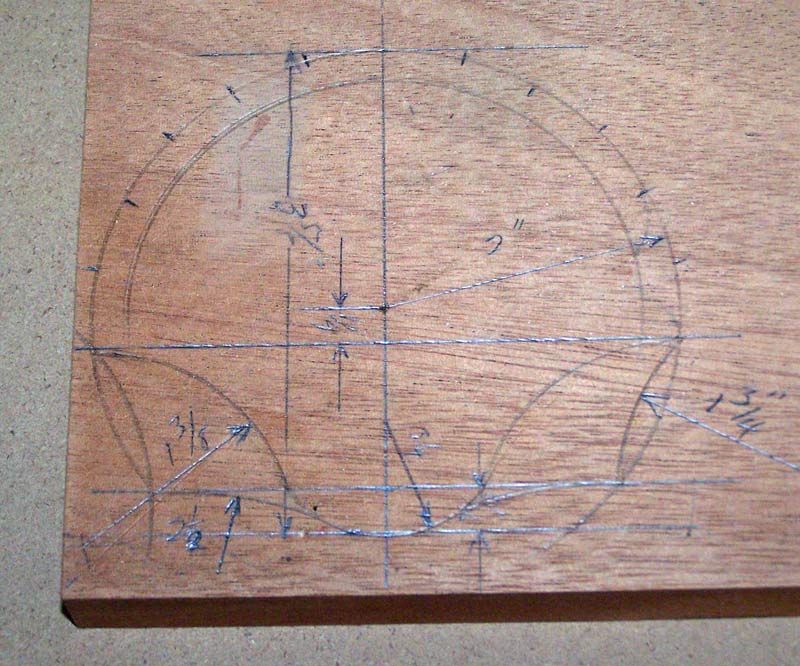
Drawing freehand, lay in the outline of the flutes. The parts sticking out will be the convex flutes and the parts going in will be the ends of the concave flutes.
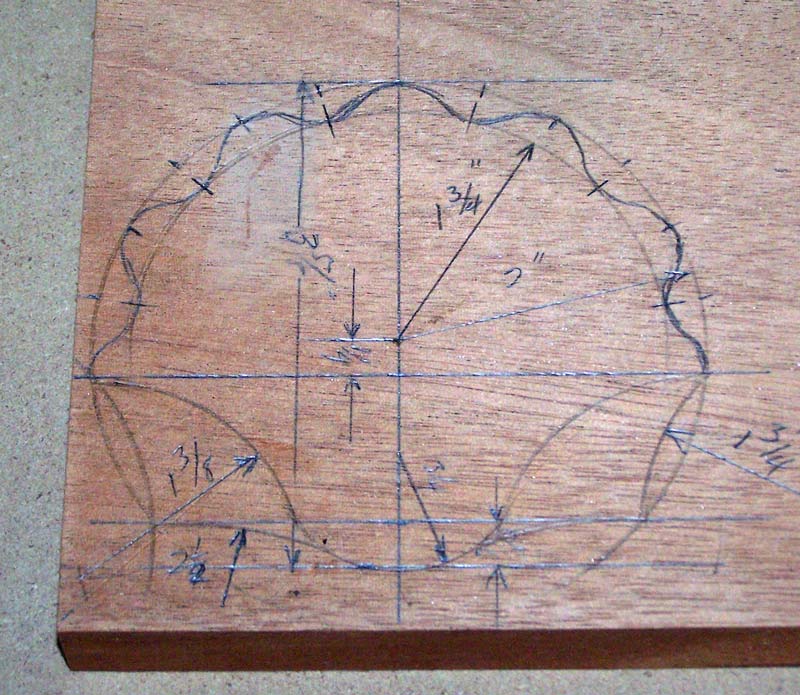
This completes the outline of the shell. While I gave specific dimensions for things like the arcs, in reality they are not that critical - you can change the dimensions (within limits) and the shell will still look fine.
Next, we cut out the shell and attach it to a backer board in preparation for carving. You could draw in the outline of the flutes, if you want to see what it will look like, but you'll carve off the lines in roughing out the blank. we'll sketch in the flutes later, once we've roughed out the shape of the shell.
The tutorial continues here.